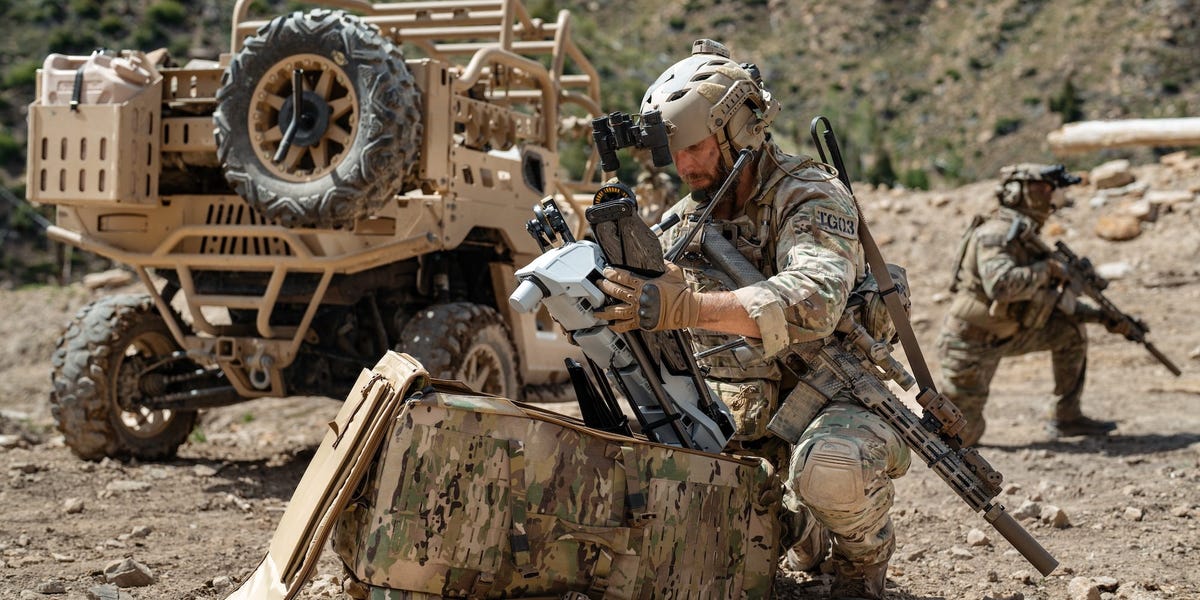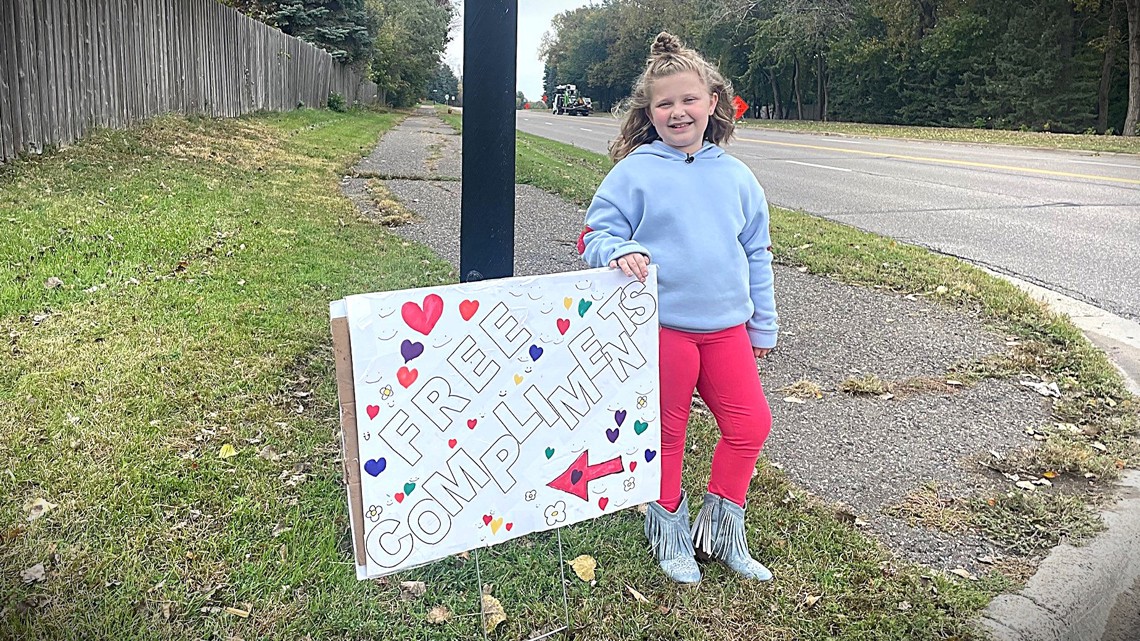A US drone maker says it’s found a way to make front-line soldiers and fighter jets safer. It’s letting backpack-sized drones do the dangerous job of painting targets with lasers.
Performance Drone Works, or PDW, demonstrated to the Pentagon in July that its compact C100 drone can mark targets for strike fighters, doing a task traditionally done by exposed troops or multimillion-dollar aircraft.
A senior company official told Business Insider that the military, which is already buying the C100, can “buy down risk” to aircraft, soldiers, and missions. PDW has received multiple contracts from the Army for its C100 drones and multi-mission payloads.
“In the past, it was the soldier relying on the Air Force to use laser target designation, or much larger drones like the MQ-9 Reaper, to do literally the same thing,” Raymond DePouli, PDW’s director of strategic accounts, said. In other cases, troops on the ground might have to execute the task.
Soldiers can pull the drone out of their rucksack and have it operational in under five minutes, and the benefit of using a drone over a human being is that it can be flown from a concealed position far from the target to limit exposure and risk.
Systems like expensive aircraft “are going to be put in harm’s way,” DePouli said. The goal is to “reduce risk to the user so they can achieve their objectives.”
Using small drones equipped with lasers to designate targets for other weapons, including aircraft, is something Ukraine is doing as it battles Russia, and it is something the US military has been experimenting with as it prepares for future fights.
Saving expensive aircraft
Using a drone lets operators mark targets from a safe distance, cutting the need for costly, crewed aircraft. It also keeps strike jets like the F-35 flying higher, where their stealth works best.
Jason McCawley/Getty Images
During the July demonstration, PDW’s C100 drones equipped with the Leonardo STAG5 Laser Target Designator (LTD) guided four inert GBU-12 precision munitions dropped from an F-35 fighter to predetermined targets.
The demo was done at different ranges, with the drone marking targets at 1,000, 1,500, and 2,000 meters. DePouli described it as “very successful overall.” The DOD has not commented on the demonstration, and did not respond to Business Insider’s request for comment.
DePouli called it one of “a few different live demonstrations with DOD personnel for the last several months.”
With the C100 and its laser target designator, DePouli said, “the soldier has that capability in his rucksack that previously he had to rely on an Air Force asset, F-35 or F-15, or an Army AH-64 Apache gunship to literally do the same thing.”
He said that Ukraine’s fight highlights the need for this type of technology, as cheaper drones, which can cost hundreds or thousands of dollars, are used to destroy equipment worth millions and to perform roles, like surveillance or attack missions, traditionally done by expensive and vulnerable equipment like crewed aircraft.
GENYA SAVILOV/AFP via Getty Images
While drones are not as powerful as combat aircraft, they are cheaper, easier to produce at scale, and their loss doesn’t risk a pilot or put a colossal dent in wartime budgets, making this technology ideal for Ukraine, which is short on both money and manpower.
The US and many of its allies possess far more advanced weaponry and have greater combat power available than Ukraine, making them less dependent on drones, but the tech is still of great interest, especially as a tool to reduce risks for troops.
DePouli said drones won’t replace assets like aircraft, “but it’s only enhancing their capabilities and you’re able to do more.” In this case, the laser designation of targets puts a risky but lesser task in the hands of a drone while leaving strikes to crewed assets.
Part of the advantage, he said, is the cost. The cost of a C100 paired with the laser target designator “is approximately $400,000 to $500,000, compared to historic air assets” worth substantially more.
An AH-64 Apache is typically at least $30 million. “From a cost point of view,” he said, “you can have 70 C100s with LTDs for the cost of one Apache attack aircraft.”
Airpower from a backpack
DePouli said it is important to PDW that the C100 “is modular, backpackable, portable by the soldier,” allowing the soldier to ” operate essentially out of his rucksack.”
Performance Drone Works
The C100 “is literally an extension of the soldier,” he said. “That drone can go to places where the soldier typically would go previously and put themselves in harm’s way. “
In the July demonstration, the operator was more than 1.8 miles from the drone as it loitered. With drones and communication links, the soldier on the ground has tremendous “access to sensors, to capabilities, to weapons platforms, all at his fingertips,” creating “a more lethal force,” said DePouli.
The C100 is a quadcopter that can fly at speeds up to 40 miles an hour and perform a range of missions, including reconnaissance and attack. Last month, the US Army awarded PDW a $20.9-million contract to deliver C100 drones and Multi-Mission Payloads, and last year, PDW announced an Army drone contract for more than $15.3 million.
There’s no guarantee the Army will use the drones in the ways they’ve been tested, but it’s an option and in line with the military’s focus, DePouli said.
It also demonstrated the C100 drone with the Leonardo LTD for the UK Ministry of Defence. It designated targets for ground-launched APKWS rockets. The UK MOD did not respond to a request for comment from BI about the demonstration.
DePouli said it was ultimately about “enhancing capability.”
“How do we enhance the end user, the soldier, the marine, the sailor? How do we enhance their capabilities through drones?”









